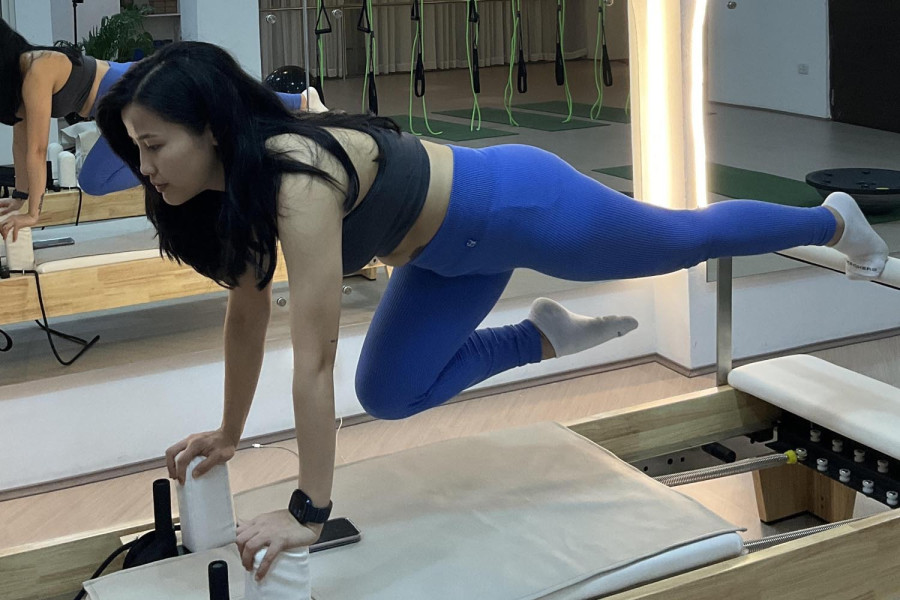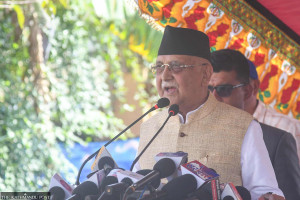Culture & Lifestyle
Improving mobility with Pilates
Instructor Sujita Tamang discusses the many benefits of regularly doing this exercise.
Rishika Dhakal
Sujita Tamang is a yoga and Pilates instructor who owns a Pilates and Yoga studio in Lazimpat Kathmandu. She has been teaching yoga and Pilates for several years.
After completing her comprehensive reformer Pilates course in India, Tamang has been working as an instructor, where she combines traditional and modern techniques for her clients.
She shares the benefits of performing this exercise regularly.
For those unfamiliar, how would you define Pilates?
In simpler terms, Pilates are exercises done on a mat. They are low-impact exercises that strengthen muscles while improving posture alignment and flexibility. This form of exercise focuses on the muscles of the abdomen, lower back, hips, and glutes. Performing Pilates on an everyday basis can be a highly effective exercise for one’s overall conditioning of the body. It can also be performed using equipment such as reformers.
Doing Pilates includes precise movements, controlled breathing, and concentration that ultimately help an individual achieve a balanced and toned body.
This form of exercise is suitable for people of all fitness levels. Customising the exercise according to an individual's needs is an excellent feature that will help enhance their physical fitness and well-being.
What are some of the benefits of doing this exercise regularly?
It enhances core strength and gives the exerciser better posture and stability. As I mentioned earlier, practising Pilates improves flexibility and increases muscle tone, particularly in the abdomen, lower back, hips, and glutes.
Similarly, It contributes to an individual's mental well-being by relieving stress and tension. Unlike other exercises, Pilates prevents the body from getting workout injuries.
By routinely practising Pilates, an individual can become well aware of their body. Along with promoting balanced muscle development, Pilates is a complete workout that helps one develop one's body holistically.
What challenges do people face when starting Pilates, and how do you help them overcome these?
One of the major difficulties my clients encounter is feeling intimidated by the equipment used in Pilates. Along with this, struggling to master specific movements, failure to build core strength, and incessant worrying about maintaining flexibility remain challenges for someone who has just begun their Pilates journey.
However, to help ease the client's anxiety surrounding the exercise, we provide classes that teach Pilates basics. We even hire a personal guide to help each person understand the correct form and technique of the training. In this process, with particular emphasis on gradual progression, we allow individuals to build strength and confidence at their own pace.
Eventually, a Pilates instructor should be concerned with creating an encouraging atmosphere where everyone feels comfortable and energised to continue their Pilates journey.
What should beginners expect in their first few sessions?
Before starting any Pilates sessions, beginners must be familiar with Pilates's foundational concepts and principles. These include breathing properly, maintaining body alignment, and understanding basic movements.
A regular Pilates session usually starts with a warm-up exercise. This helps the body prepare to continue with the exercise without facing any hurdles during the session.
Developing core strength and the body's overall flexibility is the series of exercises that continued after the warm-up session.
The pace during the workouts is usually steady and controlled, which allows beginners to get comfortable with the movements and enjoy the process.
Instructors will always be accessible to guide the trainees while ensuring that each exercise is safe and done effectively.
Can Pilates be combined with other forms of exercise? If so, how?
Yes, Pilates can be combined with other forms of exercise—for example, weight lifting, cycling, and running. However, while performing these, one should be mindful of maintaining core stability and muscle balance.
Incorporating Pilates with other workouts, such as warm-ups or cool-downs, can reduce the risk of injury. Additionally, using Pilates as a recovery workout on rest days to keep one's body flexible and strong is another added benefit of Pilates.
Can simple Pilates exercises or stretches be done at home or in the office?
Because it does not need a vast open space to perform, Pilates can be done anywhere conveniently. Here are a few exercises that can be done at home or in the office.
The Hundred:
Known as classic Pilate, this is done on a mat. For this, one has to lie on their back, bending their knees. Their body should be lifted to the tabletop position. Extending the arms by one's side, the exercise performer should raise their head, neck, and shoulders off the mat. Pumping one's arms up and down while inhaling for five counts and exhaling for five counts for 100 pumps marks the end of the exercise.
Then, stand tall with your feet hip-width apart and your hands on your hips.
Lift one leg straight in front of you to hip height, keeping your core engaged.
Standing Leg Circles:
This exercise includes making raw small circles with your raised leg, keeping the movement controlled and your upper body stable. This should be performed in 5-10 circles in one direction.
Seated Spine Twist:
The initial phase of this exercise involves sitting tall in a chair with your feet flat on the floor. Then, extend your arms out to the sides at shoulder height. Inhale to lengthen your spine, then exhale and twist your upper body to one side, keeping your hips stable. Finally, inhale to return to the centre, exhale, and twist to the other side.
Pelvic Tilts:
Lie on your back with your knees bent and feet flat on the floor. Slowly tilt your pelvis to flatten your lower back against the mat, then release.




 17.12°C Kathmandu
17.12°C Kathmandu















